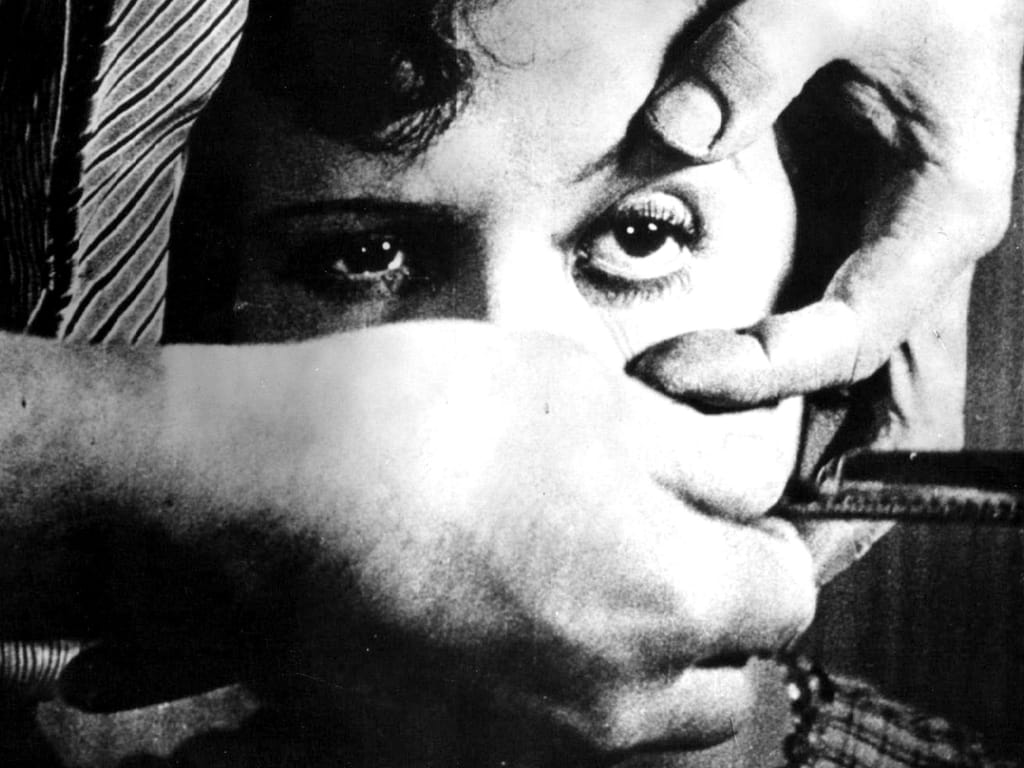Un Chien Andalou (1929)
1001 Movies to See Before You Die (Schneider, J.S, Smith, I.H)

In this article, we will be looking at 2019’s book “1001 Movies to See Before You Die” and going through each film in a random order that I have chosen. We will be looking at what constitutes this film to be on the list and whether I think this film deserves to be here at all. I want to make perfectly clear that I won’t be revealing details from this book such as analyses by film reporters who have written about the film in question, so if you want the book itself you’ll have to buy it. But I will be covering the book’s suggestions on which films should be your top priority. I wouldn’t doubt for a second that everyone reading this article has probably watched many of these movies anyway. But we are just here to have a bit of fun. We’re going to not just look at whether it should be on this list but we’re also going to look at why the film has such a legacy at all. Remember, this is the 2019 version of the book and so, films like “Joker” will not be featured in this book and any film that came out in 2020 (and if we get there, in 2021). So strap in and if you have your own suggestions then don’t hesitate to email me using the address in my bio. Let’s get on with it then.
Un Chien Andalou (1929) dir. by Luis Buñuel

Un Chien Andalou is possibly best known for that weird scene with the eye and the razor. Yes, it is kind of disgusting but it is there and there is so much more that this film did. As one of the first well-known fantasy films, it has been considered in the top films of all time and has been known to feature on many lists of early cinema.
Here is a better description of the film and its attempts of imagery and symbolism:
"The idea for the film began when Buñuel was working as an assistant director for Jean Epstein in France. Buñuel told Dalí at a restaurant about a dream in which a cloud sliced the moon in half "like a razor blade slicing through an eye". Dalí responded that he'd dreamed about a hand crawling with ants. They were fascinated by what the psyche could create, and decided to write a script based on the concept of suppressed human emotions. For many years (and still), published and unpublished reports have circulated that Buñuel had used a dead pig’s eye, or that of a dead sheep, or of a dead donkey, or other animal, in the notorious eyeball-slicing scene. However, in an interview, Buñuel claimed that he had used a dead calf’s eye. Through the use of intense lighting, Buñuel attempted to make the furred face of the animal appear as human skin."
And here is how Roger Ebert interpreted the film in his review which came out some years later [obviously] when he stated famously that the director wanted to 'throw [stones] at the audience [in case of disaster]' in some sense:
"It is useful to remember that "Un Chien Andalou" was made not by the Bunuel and Dali that we see as crumbling old men in photographs, but by headstrong young men in their 20s, intoxicated by the freedom of Paris during the decade of the Lost Generation. There is a buried connection between the surrealists and the Sex Pistols, Bunuel and David Lynch, Dali and Damien Hirst (the artist who exhibited half a lamb in a cube of plastic). "Although the surrealists didn't consider themselves terrorists," Bunuel wrote in his autobiography, "they were constantly fighting a society they despised. Their principal weapon wasn't guns, of course; it was scandal." The scandal of "Un Chien Andalou" has become one of the legends of the surrealists. At the first screening, Bunuel claimed, he stood behind the screen with his pockets filled with stones, "to throw at the audience in case of disaster." Others do not remember the stones, but Bunuel's memories were sometimes a vivid rewrite of life. When he and his friends first saw Sergei Eisenstein's revolutionary Soviet film "Battleship Potemkin," he claimed, they left the theatre and immediately began tearing up the street stones to build barricades. True?"
Georges Sadoul, the French Journalist, wrote possibly one of the best reasons the film is remembered though:
"Breton had convoked the creators to our usual venue [the Café Radio] ... one summer's evening. Dalí had the large eyes, grace, and timidity of a gazelle. To us, Buñuel, big and athletic, his black eyes protruding a little, seemed exactly like he always is in Un Chien Andalou, meticulously honing the razor that will slice the open eye in two."
To me, this was basically one of the most iconic films of early cinema. It proved to me that even in our own day - we can be as symbolic and disgusting as we liked.
Citations:
About the Creator
Annie Kapur
200K+ Reads on Vocal.
English Lecturer
🎓Literature & Writing (B.A)
🎓Film & Writing (M.A)
🎓Secondary English Education (PgDipEd) (QTS)
📍Birmingham, UK






Comments
There are no comments for this story
Be the first to respond and start the conversation.